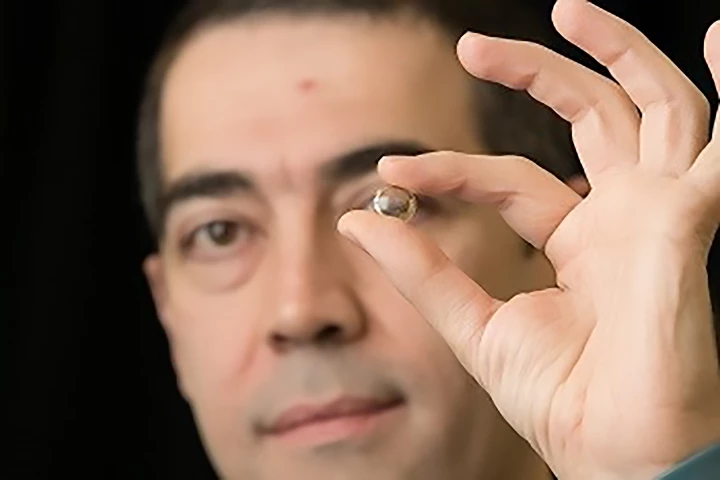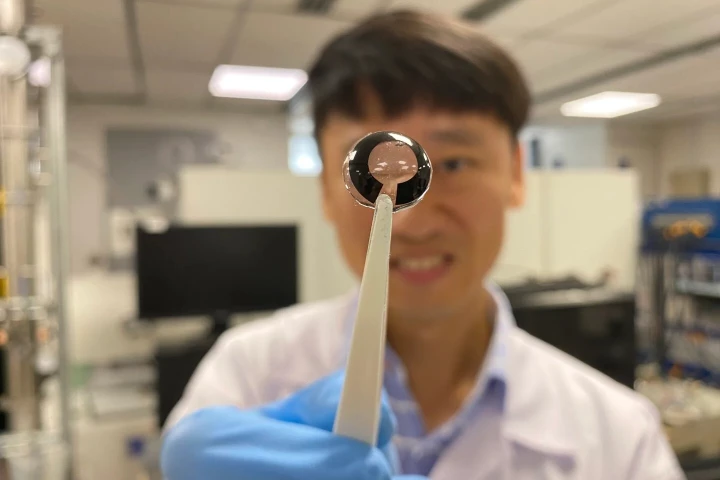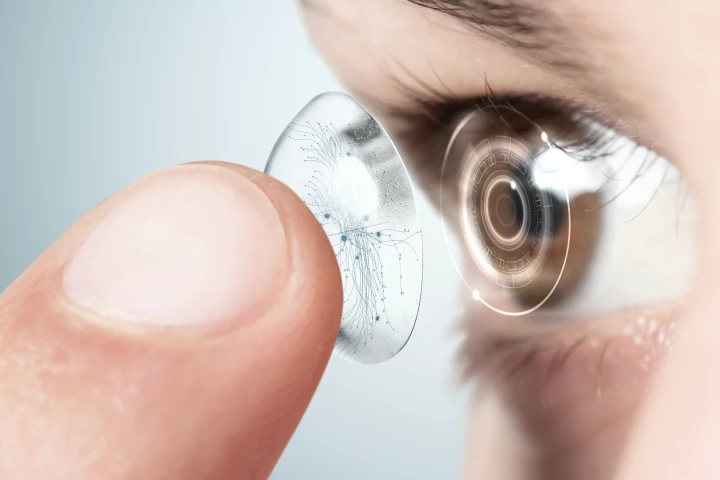Contact Lenses
-
Although there already are "smart" contact lenses that monitor the eyes for signs of glaucoma, the devices are typically only worn when the patient is awake. A new type of contact lens, however, watches over the eyes throughout the night, too.
-
It certainly sounds like something from a new sci-fi series, but a power-free set of contact lenses impregnated with nanoparticles has proven successful in allowing humans to see what has previously been invisible – even when their eyes are closed.
-
Contact lenses get pretty thin nowadays, but they’ve got nothing on a new lens from scientists at Stanford and the University of Amsterdam. The team has created the world’s thinnest lens, measuring just three atoms thick.
-
Scientists have developed a new type of lens that creates multiple focal points, which could make for glasses or contacts that provide a clearer view over a range of distances. The secret? Making the lens a spiral shape.
-
In an effort to diagnose glaucoma, a condition that can cause vision loss, earlier, researchers have developed contact lenses with sensors that measure the pressure inside the eye and send the information to an ophthalmologist for evaluation.
-
Although great strides are being made in the field of "smart" contact lenses, one challenge remains – how do you safely and discreetly power the things? Singaporean scientists may have the answer, in the form of a tear-fluid-charged ultra-thin battery.
-
A new clinical trial has found that an eye drop commonly used before eye exams may be a safe and effective way of slowing the progression of nearsightedness in children, a condition that can lead to visual impairment later in life.
-
We've recently heard about several experimental devices that monitor the pressure in glaucoma patients' eyes. The miLens contact lens – which is the latest to cross our radar – has just completed clinical trials, and could be available by next year.
-
If people with glaucoma don't stay on top of their condition, blindness may result. An experimental new contact lens is designed to help, by both monitoring glaucoma symptoms and automatically releasing medication as needed.
-
Many contact lens users end up suffering from an uncomfortable and sometimes even debilitating condition known as contact lens-induced dry eye (CLIDE). An experimental new contact lens, however, could keep that from happening … using a simple design.
-
Forget your bulky AR headsets, smart contact lenses are coming to place augmented reality displays right there on your eyeball. Last week, Mojo Vision CEO Drew Perkins volunteered to test the first feature-complete prototype of his company's design.
-
If diabetes progresses too far, it can result in a potentially blinding condition known as retinopathy. And while existing treatments are invasive and often painful, there may be new hope in the form of an LED-equipped contact lens.
Load More











